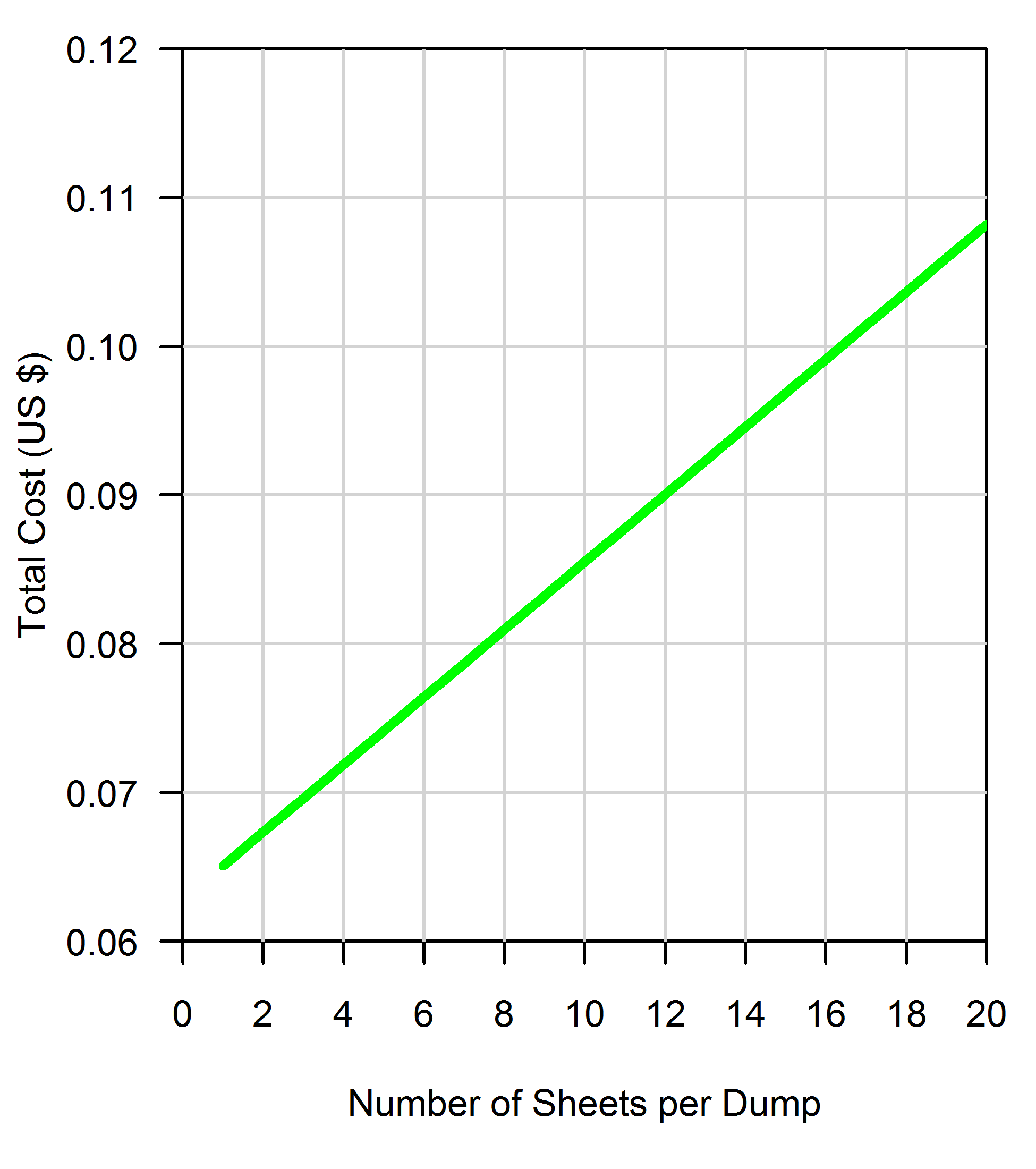
Tweet
October 23, 2014
Proceedings of the Natural Institute of Science | Volume 1 | HARD 5
Yes, if you poop at work, you are getting paid to poop. But you're also saving money
Department of Thrift1
1 - PNISsubmitted: September 16, 2014
accepted: September 21, 2014

Introduction
You’re probably familiar with the apps (e.g., Poop Salary, PoopTime, Pricy Poop), online calculators (e.g., WorkPoop, Poop Calculator, Poo Cost Calculator), or reddit threads (e.g., here and here) that calculate how much your employer pays your for pooping on the job. Depending on just how long it takes you to poop, as well as how much you earn, estimates of your poop salary can reach over $600 (according to this particular reddit user).
You get an added benefit, though, when you bust a dook at the office. Even better, this benefit doesn’t come with the potential hazard of pissing off your boss for taking too many bathroom breaks. A poop at the office means you don’t use your own toilet paper or your own water for flushing and handwashing. Depending on how many times a day you poop and how much toilet paper you use, you could potentially be saving a good chunk of money (but not a shit-ton) by pooping at work.
The Model
Let’s first try to find out the average cost per dump. Then, we can multiply that by the number of dumps you’d be able to take at work to get an estimate of the amount of money you’d save by pooping at work.
There are three cost considerations during every poop: 1) the cost of the toilet paper used, 2) the cost of flushing the toilet and 3) the cost of washing your hands. Thus, we assume that, for every poop, you use at least one square of toilet paper (no cloth wipers here, thank you), wash your hands (as per the FDA Food Code) and flush the toilet at least once (as per the ‘yellow-mellow-brown-flushitdown’ Code). Mathematically, we can represent this as
$D = $T + $F + $H,
where $D is the cost per dump, $T is the total cost of toilet paper, $F is the total cost of flushing and $H is the total cost of hand-washing.
Let’s take a look at each of these three components in finer detail. The total cost of toilet paper ($T) is the cost of one toilet paper sheet ($s) multiplied by the total number of sheets used per dump (Ns), or $s × Ns. The total cost of flushing ($F) is the cost of flushing the toilet ($f) multiplied by the number of flushes used per dump (Nf), or, $f × Nf. Finally, the total cost of handwashing ($H) is the cost of hand-washing per minute ($h) multiplied by the number of minutes spent washing wands (Nh), or $h × Nh.
All of these parameters are fairly easy to estimate, but will vary depending on a variety of factors. For simplicity, we will assume one value for all parameters except for Ns (the number of sheets used per dump) which, I think, is the most variable. We’ll allow Ns to vary from one sheet (gross) to 20 sheets (also gross, but in a much different way). For the other parameters, we’ll set $s (the cost of one sheet of toilet paper) to $0.00227 (an average obtained from the data collected by Truman 2011), $f (the cost of flushing the toilet) to $0.0256 (Richardson 2012), Nf (number of flushes used per dump) to 1.02 (assuming you have one epic dump for every 50 regular dumps), $h (the cost of washing your hands for one minute) to $0.0367 (an average of gas, oil, and electric sources using the cost calculator generated by MIPL 2011), and Nh (number of minutes spent washing your hand) to 1 minute. Plugging in all of these numbers, we can plot the cost of a dump ($D) as a function of the number of toilet paper sheets one uses (Figure 1). Here, we can see that every time you take a dump, you spend anywhere from 6.5 to 10.8 cents depending on your personal sanitation requirements.

Now we just need to figure out how many of those dumps you can conceivably take at work, which will depend on: 1) the number of days a year you are at work, 2) the number of times you usually take a dump during a day, and 3) how willing you are to match your bowel movements to your work schedule. For simplicity, let’s assume that you’re not coming in to work on weekends or holidays just to take a dump (although the combination of saving additional dump money with the brownie points you’d get for showing up on the weekend could be a good strategy), which gives us about 252 days a year you’re at work. According to someone once affiliated with the University of Massachusetts (Anonymous 2008), most people take a dump between once every three days to three times a day. How many of those dumps that people are willing to force out at work is anyone’s guess, although one should never underestimate a person’s desire to save money (e.g., Gaffney 2007). Thus, instead of using one value for the number of dumps the average person will take at work, let’s explore a range of values.
Figure 2 shows how much money you can save every year by pooping at work, as a function of both the number of toilet paper sheets you use and the number of times you’re willing to take a dump at work. To use the figure, find the colored line that most closely matches the number of dumps you can take at work per day. Then figure out how many toilet paper sheets you typically use per dump and determine your dump savings. For example, our intern Bob can typically poop about once a day at work, and uses about 10 sheets per dump, so Bob can save about $21 a year by pooping at work.

You can get an exact savings amount by using the following expression:
D@W(0.572Ns+15.829),
where D@W refers to the number of dumps you can take at work per day.
Conclusions
The range of savings is actually quite large. Sheet-conscious constipators can expect to save a meager $5.50 a year, while liberal-wiping loose-stoolers can expect savings up to $80. For most people, the amount of money that can be saved is not that trivial. Twenty to forty dollars a year can be used for various subscriptions to magazines or newspapers that you’ll won’t be able to read on your home toilet anymore. Or, for about every 20 dumps you take at work, you can afford a new app for your phone, which you can pass the time with on the work toilet while you force your next bowel movement. Your employer will probably start to lose money because of increased custodial costs and lost productivity from employees spending more time in the bathroom, but, you know, shit happens.
References
Anonymous (2008) How often does the average person poop? http://www.umass.edu/mycenter/documents/bb/poop.pdf.
Gaffney D (2007) This guy can get 59 MPG in a plain old Accord. Beat that, punk. Mother Jones, 32:56.
Massachusetts Interfaith Power & Light (2011) How much does your $ink cost for hot water. www.mipandl.org/MIPL_resources/MIPL_SinkCostCalculatorTemplate.xls.
Richardson J (2012) Water conservation. Are you flushing your money down the toilet? Calcunation.com
Truman K (2011) How to find the best deals on toilet paper. Happymoneysaver.com.

Proceedings of the Natural Institute of Science (PNIS) by https://instsci.org/ is licensed under a Creative Commons Attribution-ShareAlike 4.0 International License.